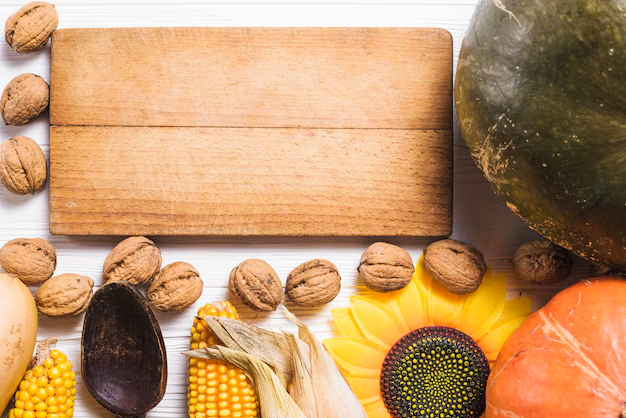To Chill or Not to Chill: The Peanut Butter Dilemma
When it comes to storing peanut butter, there’s a split in opinion that rivals any culinary debate. Should it be stored in the refrigerator, or is it better left in the pantry? While this may sound trivial, the way you store your peanut butter can affect its taste, texture, and usability. This guide aims to delve deep into this subject, providing clarity and guidelines for storing peanut butter properly.
🥜 Understanding Peanut Butter: Types and Ingredients
To make an informed decision, it's essential to first understand what peanut butter is made of. This beloved spread is typically composed of ground peanuts, often blended with oil, salt, and sometimes sweeteners and additives. There are two primary types:
- Natural Peanut Butter: This contains just peanuts and possibly a bit of salt. It tends to separate, with peanut oil rising to the top.
- Commercial Peanut Butter: This often includes added sugars, hydrogenated oils, and preservatives to enhance flavor and shelf stability. It typically does not separate in the same way natural peanut butter does.
The type of peanut butter you consume might influence whether refrigeration is necessary.
🍯 The Case for Refrigeration
Preserving Freshness and Flavor
Natural Peanut Butter requires refrigeration. The lack of preservatives means it's more susceptible to spoilage. Refrigerating natural peanut butter helps maintain its flavor and prevents the oils from going rancid—a process where exposure to air and heat breaks down fats, altering taste and safety.
Enhancing Shelf Life
For those who stick to one jar of peanut butter over an extended period, refrigeration can significantly extend the product's shelf life. Even commercial varieties can last longer when kept cool.
Reducing Oil Separation
Oil separation is a common issue, especially with natural peanut butter. Keeping it in the refrigerator can minimize this separation, providing a more consistent texture.
🧂 The Pantry Argument
Improving Spreadability
A common critique of refrigerating peanut butter is the change in texture. Cold peanut butter hardens, making it more difficult to spread on bread or stir into recipes like smoothies or baking. Those who prefer immediate spreadability often advocate for pantry storage.
Flavor and Ready-to-Eat Convenience
Refrigerated peanut butter can sometimes lose a bit of its intense peanut flavor, as cold temperatures can mute its taste. Many enthusiasts prefer the full-bodied flavor profile of room-temperature peanut butter. For those who consume it quickly or use it frequently, pantry storage is convenient and allows for optimal taste and spreadability.
Key Considerations for Storage
- Climate and Environment: Living in a hotter, more humid environment could necessitate refrigeration to prevent spoilage.
- Consumption Rate: If a jar lasts several months, consider refrigeration, regardless of type.
- Peanut Butter Type: Natural peanut butter benefits from refrigeration more than commercial types due to its oil content and lack of preservatives.
📝 Quick Tips for Storing Peanut Butter
Let's break it down into practical, easy-to-follow advice:
- 🥶 Refrigerate natural peanut butter to maintain freshness and prevent oil separation.
- 🌡️ Keep in the pantry if you consume it quickly and prefer it soft and ready-to-spread.
- 👩🍳 Stir before refrigeration: Stirring natural peanut butter before popping it in the fridge helps to integrate oils, reducing separation later.
- ♻️ Use airtight containers for opened jars to guard against moisture and odors.
🍴 Uses and Temperature Implications
Peanut butter is versatile, used in everything from cooking to snacking. How you store it directly impacts its application:
- Baking: Room temperature peanut butter is easier to measure and mix.
- Snacking: Consider how quickly you'll consume it and how important texture is to you. Refrigerated peanut butter on a spoon might not be as satisfying.
- Cooking: For recipes requiring liquid consistency, room temperature is ideal.
🤔 Additional Storage Insights
Reusable and Eco-Friendly Jars
If you lean towards eco-conscious living, consider transferring the peanut butter to reusable glass containers, particularly for refrigeration. Glass is odor-resistant and offers excellent preservation qualities.
Storing in Small Portions
For ease of use, portioning your peanut butter into smaller serving sizes can simplify your routine. Portion control is convenient if you're rushing to fix a quick snack or cooking, eliminating the hassle of stirring a large, refrigerated jar.
🛒 Grocery Stores and Manufacturing Perspectives
A brief stroll down supermarket aisles reveals peanut butter predominantly stored on shelves, not in coolers. This is made possible due to the preservatives added by manufacturers in commercial peanut butter, which allows for room-temperature stability.
Manufacturers design these products to accommodate average pantry conditions, ensuring they maintain a solid shelf life. Nonetheless, consumer manipulation through refrigeration can aid or impair this stability.
🤓 Insights and Common Misconceptions
- Does peanut butter need preservatives? Natural variants are preservative-free but require refrigeration and frequent stirring.
- Is oil separation a sign of spoilage? Not necessarily. It’s a natural process of oil rising to the top. Stirring re-emulsifies the mixture.
- Can refrigeration ruin peanut butter? It doesn't ruin it but changes its texture. Flavor is mainly retained, though temperature can mute its intensity temporarily.
🔍 Conclusion: A Balanced View on Peanut Butter Storage
Ultimately, whether to refrigerate peanut butter depends on personal preferences, type, and frequency of consumption. Those who prize longer shelf life and freshness will likely find refrigerating a good option, particularly for natural peanut butter. For those who enjoy the convenience and immediate spreadability, room-temperature storage may be the way to go.
Understanding these factors helps in making an informed choice. Your peanut butter's taste and texture depend on how you balance these considerations, ensuring every spread and spoonful is exactly as you enjoy it.
